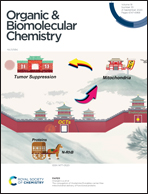Optical purity, enantiomeric excess and the Horeau effect
Abstract
The optical purity of an enantiomeric mixture deduced from specific rotation measurements was found by Horeau to be different from its enantiomeric excess, which came to be known as the Horeau effect. This observation had important implications in the practical use of specific rotations and has led to investigations on homochiral and heterochiral aggregation processes. In this review, dedicated to the Horeau principle, the theoretical basis for the observance of the Horeau effect and a survey of the specific rotation studies investigating the Horeau effect are provided, and possible future investigations are suggested.

- This article is part of the themed collection: Mechanistic, computational & physical organic chemistry in OBC


 Please wait while we load your content...
Please wait while we load your content...